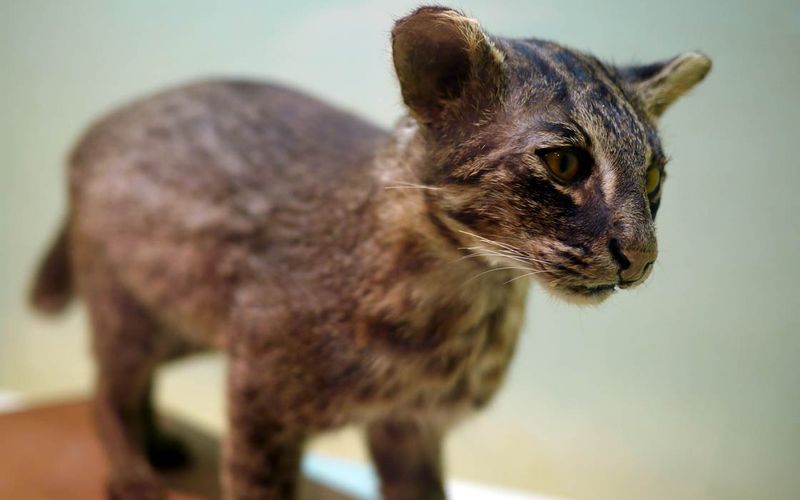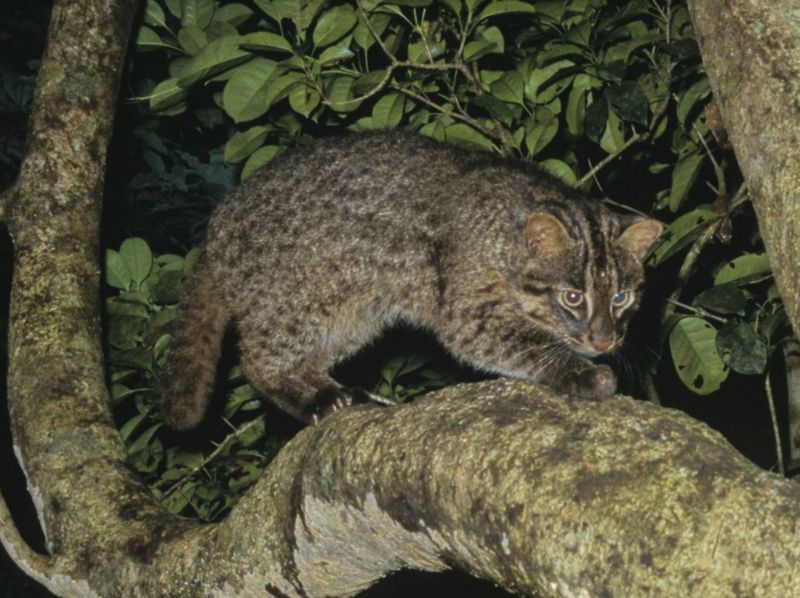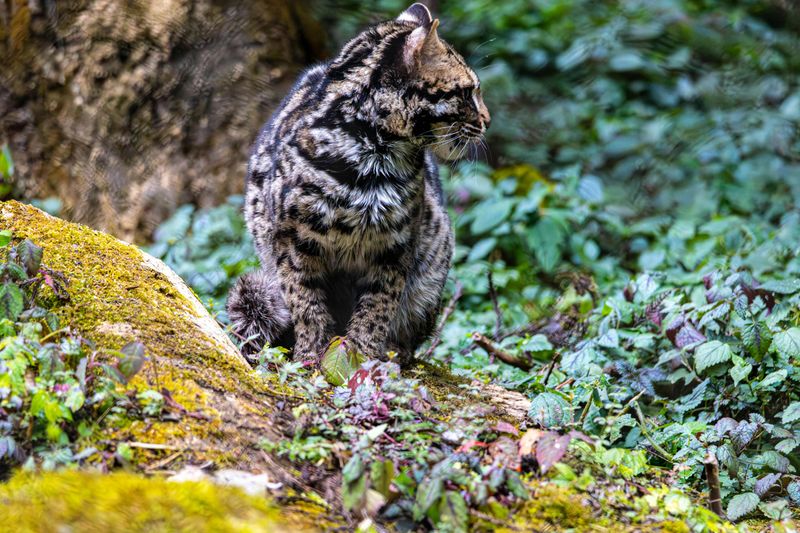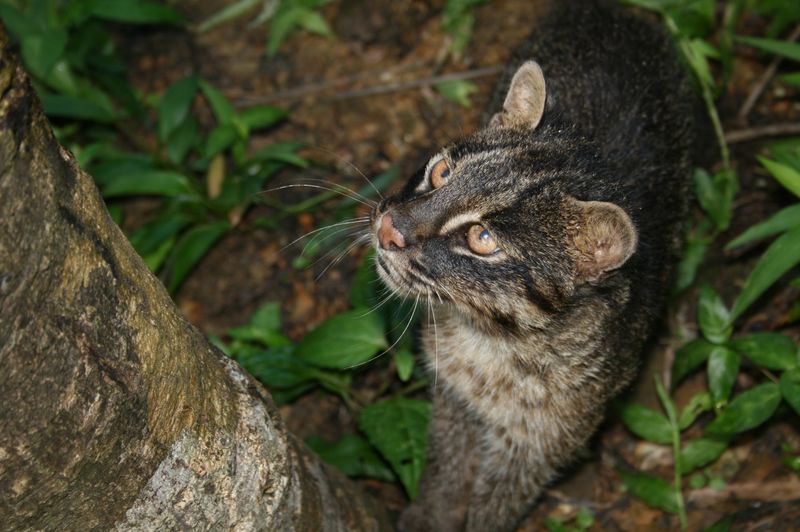📖 Table of Content:
Tucked away in the dense, misty jungles of Japan’s remote Iriomote Island lives a creature so rare and mysterious that even many Japanese people have never seen it in the wild. Meet the Iriomote cat (Prionailurus bengalensis iriomotensis), a wild feline known for its elusive behavior, rugged beauty, and critically endangered status. This small predator, often referred to as Japan’s very own “jungle cat,” has become a symbol of the island’s fragile biodiversity.
Despite its low profile, the Iriomote cat is a biological and ecological treasure. It’s one of the few wild cat species adapted to subtropical island environments, blending seamlessly into its surroundings with a camouflaged coat and an instinct for stealth. Its habitat—a lush paradise of mangroves, rivers, and forest—makes Iriomote Island a biodiversity hotspot and a vital stronghold for conservation efforts in Japan.
But how much do we actually know about this rare feline? From its unusual behaviors to the serious threats it faces, the Iriomote cat is full of surprises. In this article, we’ll explore 7 fascinating facts about this jungle predator that might just make you fall in love with one of Japan’s most mysterious animals—and perhaps inspire you to care about its future, too.
1. Endemic to a Single Island
Only one place on Earth is home to the Iriomote cat: a small, subtropical island in Japan’s Okinawa Prefecture. Known as Iriomote Island, it spans just 290 square kilometers—roughly the size of Malta. This makes the cat’s natural range incredibly limited, increasing its vulnerability. Unlike other wild cats that roam across continents, the Iriomote cat’s entire world is contained within this island’s dense forests, mangroves, and riverbanks. As a result, habitat loss in even a small portion of the island can drastically impact the entire species. Tourists often visit the island for its scenic beauty, unaware they’re stepping into the rare habitat of this jungle feline. With no population elsewhere, conservation efforts here are crucial. The fate of the species literally rests on one patch of Earth.
2. Not Actually a Tiger (Despite the Name)
Despite its fierce-sounding name, the Iriomote cat is not a tiger, nor a subspecies of one. Its scientific classification reveals it’s actually a subspecies of the leopard cat (Prionailurus bengalensis), not a big cat at all. While its coat has faint stripes and spots that might remind someone of a jungle predator, its size is closer to a domestic cat. Interestingly, it averages just 3–5 kilograms in weight. Japanese locals often refer to it as yamaneko, meaning “mountain cat,” which adds to the confusion. Still, this small feline has earned its own place in the wild with stealth and adaptability. The nickname may be misleading, but the creature behind it is no less captivating. In truth, it’s the cat’s mystique that earns it a larger-than-life reputation.
3. Mostly Nocturnal and Super Stealthy
Nightfall is when the Iriomote cat truly comes alive. While humans sleep, this elusive feline prowls the forest under the cover of darkness. Its nocturnal lifestyle makes it incredibly difficult to study or observe in the wild. Using heightened senses of sight and hearing, it quietly stalks prey ranging from birds to frogs. Rarely will it be seen during daylight hours, as it prefers the safety of hidden dens and overgrown terrain. Even camera traps often miss it due to its cautious movements. This stealthy behavior has contributed to its mysterious reputation and made researchers’ jobs harder. To encounter one in the wild is considered a once-in-a-lifetime experience.
4. Excellent Tree Climbers and Swimmers
Climbing trees and crossing rivers are no problem for the Iriomote cat. Its physical agility is matched by few in the feline world. Unlike many small cats, this one isn’t afraid of water—in fact, it’s been observed swimming across streams to hunt or evade threats. Its environment, full of rivers, mangroves, and uneven jungle terrain, demands this kind of versatility. Evolution has gifted the cat with powerful limbs and retractable claws, allowing it to grip branches and scale trunks with ease. Researchers believe this agility also helps the cat escape predators and navigate its prey-rich habitat. Interestingly, its comfort in water sets it apart from most other members of its species group. Whether in the canopy or underwater, the Iriomote cat moves with silent confidence.
5. Fewer Than 250 Left in the Wild
Tragically, the Iriomote cat’s population is estimated at just 100 to 250 individuals. Conservationists are alarmed by how low this number has become in recent decades. Factors like habitat destruction, road accidents, and invasive species are driving the decline. The cat’s limited distribution amplifies the danger—there’s simply no “Plan B” if its island home is compromised. Without urgent protective measures, this subspecies could face extinction within a few decades. It’s not just about numbers; the Iriomote cat is a key predator in its ecosystem. Losing it would disrupt the balance of local biodiversity. Every single cat matters when your species can fit on a school attendance sheet.
6. Roads Are a Major Threat
Modern development has brought paved roads to Iriomote Island—and with them, danger. As vehicles traverse the island, collisions with wildlife have become disturbingly common. The Iriomote cat, often crossing roads during nighttime for hunting, is frequently the victim of fatal accidents. In response, conservationists and local governments have installed motion-sensor signs, “cat crossing” warnings, and reduced speed zones in known crossing areas. Wildlife underpasses have also been introduced to provide safer alternatives. Despite these efforts, roadkill remains one of the leading causes of death for the species. The growing number of tourists and vehicles only adds to the risk. Solving this issue requires continuous public awareness and infrastructure adaptation.
7. Strictly Protected Under Japanese Law
Legal protection for the Iriomote cat is both extensive and essential. It is listed as a Special Natural Monument under Japan’s Cultural Properties Protection Law. This designation restricts land development, animal harassment, and unpermitted photography in certain zones. Additionally, it’s classified as a National Endangered Species under the Act on Conservation of Endangered Species of Wild Fauna and Flora. These laws are enforced through penalties, but more importantly, they promote habitat conservation and scientific research. Education campaigns also aim to inform locals and tourists about the cat’s delicate status. While law alone can’t save a species, it lays the groundwork for long-term survival. The legal shield around the Iriomote cat reflects Japan’s recognition of its irreplaceable value.







